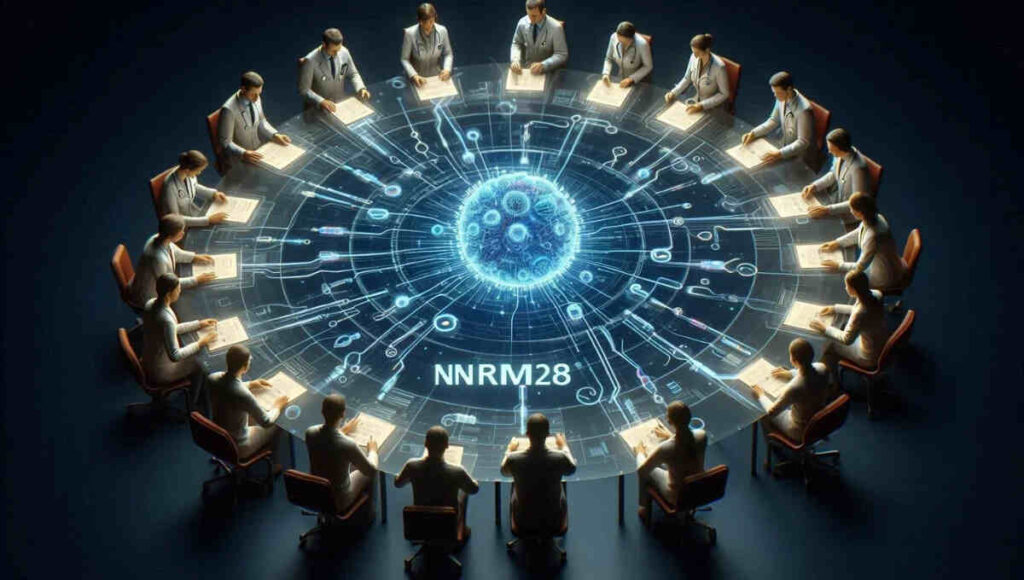In the world of technology, innovations such as NNRM28 have emerged as powerful solutions to some of the most complex challenges in various industries. Known for its exceptional adaptability and advanced capabilities, NNRM28 is redefining how we think about artificial intelligence, machine learning, automation, and data processing. With applications spanning healthcare, finance, manufacturing, and more, it has become a central player in modernizing industry practices. This article will provide an in-depth guide on what NNRM28 offers, its real-world applications, potential limitations, and how it is poised to shape the future of technology.
NNRM28: An Overview and Historical Context
NNRM28 is an innovative technology framework designed to address limitations found in previous generations of tech infrastructure. Originally conceptualized as an AI-focused platform, it has since evolved into a multi-functional system that integrates advanced computation, connectivity, and machine learning. Its roots can be traced back to the growing demand for real-time analytics and machine learning, designed to handle vast amounts of data at rapid speeds. This evolution has equipped NNRM28 to support industries that demand high computational efficiency and real-time decision-making capabilities.
Compared to traditional technologies, which often rely on pre-programmed algorithms, NNRM28 is adaptive. It learns from the data it processes and improves over time, which is essential for environments where conditions change rapidly, such as finance, healthcare, and manufacturing.
How NNRM28 Differs from Existing Technologies
One of the core differentiators of NNRM28 is its ability to autonomously adapt to new data inputs. Traditional frameworks typically operate within fixed rules, often leading to challenges when dealing with unexpected data. In contrast, NNRM28’s dynamic learning model enables it to adjust to new situations, providing increased reliability and flexibility. This adaptability makes it ideal for systems requiring predictive analytics, real-time adjustments, and continuous improvements without manual input.
Key Features and Advantages of NNRM28
NNRM28 is equipped with several features that position it at the forefront of technology solutions.
Advanced Computational Power: NNRM28’s high processing capacity allows it to handle complex calculations swiftly. This feature is crucial for industries like finance, where quick data analysis can directly impact investment decisions, and healthcare, where real-time data can enhance patient outcomes.
Seamless Connectivity: Connectivity is vital for IoT applications and smart cities, where multiple devices and sensors must interact in real time. NNRM28 ensures smooth integration and uninterrupted data flow between devices, enhancing communication and operational efficiency.
Intelligent Automation: Automation is central to NNRM28’s functionality, reducing the need for human intervention. By automating repetitive tasks, companies can improve accuracy and focus on strategic initiatives. For example, in manufacturing, automation translates to reduced errors, faster production cycles, and streamlined operations.
Security and Privacy: NNRM28 prioritizes security through encrypted data processing and multi-layered firewalls. For sectors dealing with sensitive information, such as healthcare and finance, NNRM28’s robust security framework prevents unauthorized access, ensuring data integrity.
Adaptive Learning Capabilities: NNRM28 continuously improves by learning from the data it processes. This feature is beneficial in predictive maintenance, customer service, and operational optimization, where can anticipate needs and optimize performance without requiring manual input.
Real-World Case Studies of NNRM28
NNRM28 has already made an impact across several sectors, helping businesses to improve efficiency and stay competitive.
Healthcare
In healthcare, NNRM28 assists with diagnosis, treatment planning, and patient monitoring. For example, hospitals using NNRM28’s predictive analytics can identify potential health complications early on, alerting medical staff before issues escalate. Additionally, NNRM28’s real-time data analysis can help in remote care, where patient data is continuously monitored, enabling doctors to offer personalized treatments based on evolving health conditions.
Finance
Finance professionals benefit from NNRM28’s ability to analyze market trends and improve transaction security. By analyzing historical data and real-time market shifts, NRM28 helps analysts and investors make informed decisions. Additionally, the security features of NNRM protect transactions and prevent fraud, providing an extra layer of confidence in digital transactions and safeguarding customer information.
Manufacturing and Industry
In manufacturing, NNRM28 has streamlined processes by enabling predictive maintenance and automating quality control. For instance, NRM28 can analyze machinery performance to detect potential issues before they lead to breakdowns, minimizing downtime and maintenance costs. The technology also optimizes logistics and supply chain operations, ensuring that resources are efficiently allocated and delays are minimized.
Challenges and Limitations of NNRM28
While NNRM28 offers numerous benefits, it faces certain challenges:
Implementation Costs: The infrastructure required to support NNRM is costly, which can be a barrier for smaller businesses.
Data Privacy Concerns: With large-scale data processing, privacy is a major concern. NNRM28 needs strong data protection measures to address concerns about user data security.
Complex Integration: Integrating NNRM28 with legacy systems can be challenging and may require specialized technical expertise.
Dependency on Data Quality: NNRM28 relies on high-quality data. If the data is incomplete or inaccurate, it could lead to flawed outcomes, affecting the overall reliability of the technology.
NNRM28 in the Global Market
NNRM28 has gained traction worldwide, especially in North America, Europe, and parts of Asia. Its applications in these regions span various sectors, including tech, healthcare, and manufacturing. However, due to the technology’s high implementation costs, adoption rates vary.
Future Trends and Innovations
The future of NNRM28 is bright, with potential enhancements on the horizon:
Enhanced Machine Learning Integration: As machine learning advances, NNRM28 could leverage even more sophisticated models, allowing it to handle more complex data patterns.
Quantum Computing Synergy: Quantum computing has the potential to supercharge NNRM28’s computational abilities, making it capable of solving problems that are currently insurmountable with traditional systems.
Expanded IoT Applications: As IoT adoption grows, NNRM28 could be at the core of smart cities, enabling better infrastructure management and more efficient resource utilization.
Conclusion
NNRM28 represents a shift toward more responsive, adaptable, and intelligent technology solutions. Its ability to enhance operational efficiency, automate complex tasks and adapt to real-time data inputs makes it invaluable for industries aiming to future-proof their systems. As we move forward, embracing NNRM and similar technologies will be key to thriving in a data-driven world, where continuous innovation and adaptability define success.

